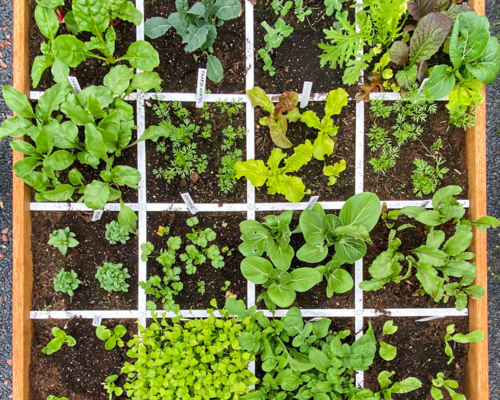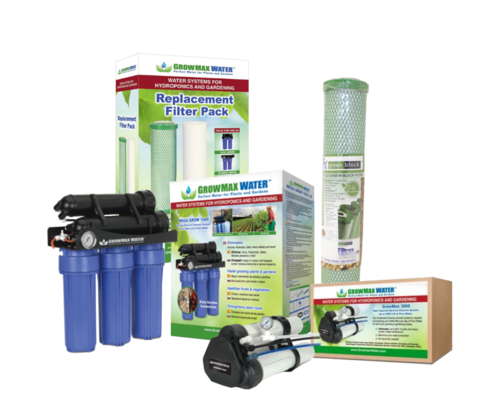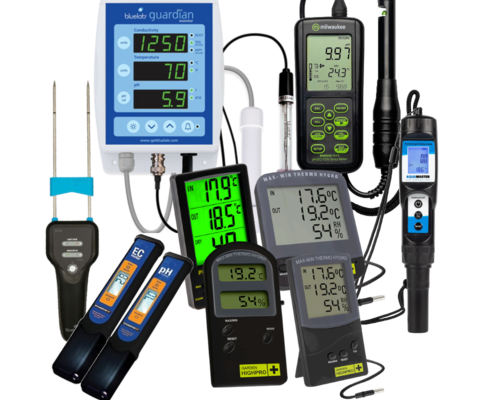What is an irrigation system?
An irrigation system is a system used to distribute water to areas that do not receive enough water, such as gardens, farmland, parks and sports fields. The purpose of the system is to promote the growth and productivity of plants and crops by providing them with sufficient water, without having to spend too much time or effort on manual watering.
There are different types of irrigation systems, such as spray systems, underground systems, surface irrigation systems and drip irrigation systems. Each of these systems has its own advantages and disadvantages, so it is important to choose the right system depending on your specific needs and goals.
An irrigation system is usually controlled by a timer or computer-controlled system, so it waters at set times or depending on weather conditions. Some systems are also equipped with sensors that measure the moisture of the soil, making them capable of automatically adjusting watering to the needs of the plants. Overall, an irrigation system is an efficient and effective tool for saving water while keeping your plants and crops healthy and productive.
Constructing an irrigation system
Building an irrigation system for your garden or farm is a great way to save water and time. A well-designed and efficient system will ensure that your plants and crops get the right amount of water, making them healthier and more productive.
Before you begin constructing your irrigation system, it is important to determine your goals and needs. This means deciding which areas of your garden or land should be watered and how often, as well as the amount of water needed. This will help you determine the size and type of irrigation system you need. Once your goals and needs are established, it's time to design your irrigation system. Here are some things to think about:
- Water source: It is important to determine where you will get your water from. This can come from a well, stream, river or city pipeline.
- Pipes: You need to decide what kind of pipes you will need and how best to install them. This will depend on the distances and slopes in your yard or land.
- Sprinklers: There are many different types of sprinklers on the market, so you need to decide which one best suits your needs and goals.
- Timers and controllers: It is important to decide how you want to control your irrigation system. This can be done with a timer or a computer-controlled system.
Once you have designed your irrigation system, it is time to install it. Here are some steps to follow:
- Digging: You need to dig and install the pipes and sprinklers according to your design.
- Connecting pipes: You need to connect the pipes to your water source and check the system to make sure it is working correctly.
- Installing sprinklers: You must install the sprinklers and set them at the correct height and direction.
- Testing: Test your irrigation system for any leaks
Different types of irrigation systems
There are different types of irrigation systems, each used for specific purposes and environments. Below are some of the most common types of irrigation systems:
- Spray systems: This type of system uses sprays or fountains that spit out water to water areas. It is suitable for smaller areas and is easy to install and maintain.
- Underground systems: This type of system uses underground pipes and sprinklers to store and distribute water. It is usually suitable for larger areas and is less visible than overhead systems.
- Surface irrigation systems: This type of system uses surface irrigation, such as flashing or swell, to water areas. It is usually suitable for large agricultural areas and is efficient at distributing water.
- Drip irrigation systems: This type of system uses drippers or pipes with small holes to deliver water directly to the ground, giving plants the water they need. It is very efficient in the use of water and is suitable for smaller areas.
- Micro-irrigation systems: This type of system uses very small drippers or pipes to give water directly on the ground, and is very efficient in the use of water. It is suitable for small areas and is usually inexpensive to purchase and maintain.
There are many other types of irrigation systems, and the choice depends on the specific needs and environment of each area. It is important to consider the pros and cons of each system and seek expert advice before making a decision.
Advantages and disadvantages of an irrigation system
Below is a list of the main advantages and disadvantages of an irrigation system:
Advantages:
- Saves time and effort: Manual watering is time-consuming and tiring, especially if you need to water a large area. With an irrigation system, you can automate this task and save time and effort.
- Increases growth and productivity: Watering plants and crops regularly and consistently increases their growth and productivity.
- Saves water: An irrigation system is more efficient at applying water than manual watering, and it reduces the risk of overwatering and evaporation.
- Easier to control: Irrigation systems can usually be easily adjusted and controlled through a timer or computerized system, allowing watering according to your specific needs.
Disadvantages:
- Investment: Irrigation systems can be a significant investment, especially if you need to water a large area.
- Maintenance: Irrigation systems require regular maintenance, such as checking and replacing pipes and sprinklers, to ensure they continue to work effectively.
- Potential water waste: If the irrigation system is not properly regulated, it may overwater, leading to water waste.
- Possible contamination: If the water comes from a well or reservoir, contamination can occur if it is not managed properly.
Is draining needed in addition to your irrigation system?
Drainage is often needed with irrigation systems. This is because too much water in the soil can lead to excessive saturation, preventing plants from growing properly and affecting soil structure.
Drainage helps to drain excess water quickly so that it does not remain in the soil and damage the plants and soil. It is an important consideration when constructing an irrigation system, especially in areas with heavy soils or in areas of high rainfall.
There are different types of drainage systems that can be used, depending on the specific needs and environment. For example, surface drainage is used to drain water on the surface, while underground drainage systems drain water from the soil. It is important to seek expert advice to determine which type of drainage is best for your particular situation.
Do you want more information?
Want more information on a specific topic? Check our "Knowledge Center" blog page to see if the information you need is among them. Is the information not in one of our blogs? We have a piece of text with each category where the products are explained in broad terms. The most popular categories are:




